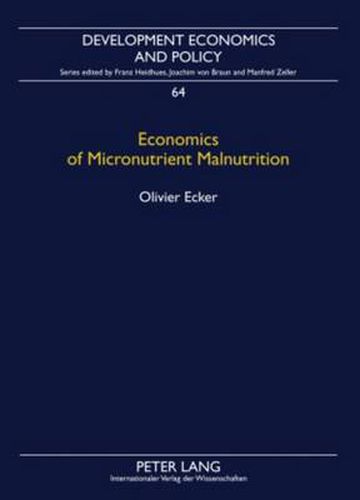Readings Newsletter
Become a Readings Member to make your shopping experience even easier.
Sign in or sign up for free!
You’re not far away from qualifying for FREE standard shipping within Australia
You’ve qualified for FREE standard shipping within Australia
The cart is loading…






Micronutrient malnutrition is a serious public health problem, especially in developing countries. Hence, evaluating the nutritional impacts of market and policy changes requires more than just a calorie focus. This work extends the traditional perspective and analyzes the effects of income, food price, and sociodemographic developments on vitamin and mineral adequacies at the household level. The author proposes two approaches to estimate income and price elasticities of nutrient consumption and presents a procedure for assessing the nutrition situation in populations based on food consumption data. Using both approaches demand models are applied in two empirical studies with data from rural East Africa and Malawi. Results suggest that the nutritional status is highly income-responsive. Price elasticities are lower in absolute values, albeit with notable differences between nutrients. Policy implications are discussed.
$9.00 standard shipping within Australia
FREE standard shipping within Australia for orders over $100.00
Express & International shipping calculated at checkout
Micronutrient malnutrition is a serious public health problem, especially in developing countries. Hence, evaluating the nutritional impacts of market and policy changes requires more than just a calorie focus. This work extends the traditional perspective and analyzes the effects of income, food price, and sociodemographic developments on vitamin and mineral adequacies at the household level. The author proposes two approaches to estimate income and price elasticities of nutrient consumption and presents a procedure for assessing the nutrition situation in populations based on food consumption data. Using both approaches demand models are applied in two empirical studies with data from rural East Africa and Malawi. Results suggest that the nutritional status is highly income-responsive. Price elasticities are lower in absolute values, albeit with notable differences between nutrients. Policy implications are discussed.